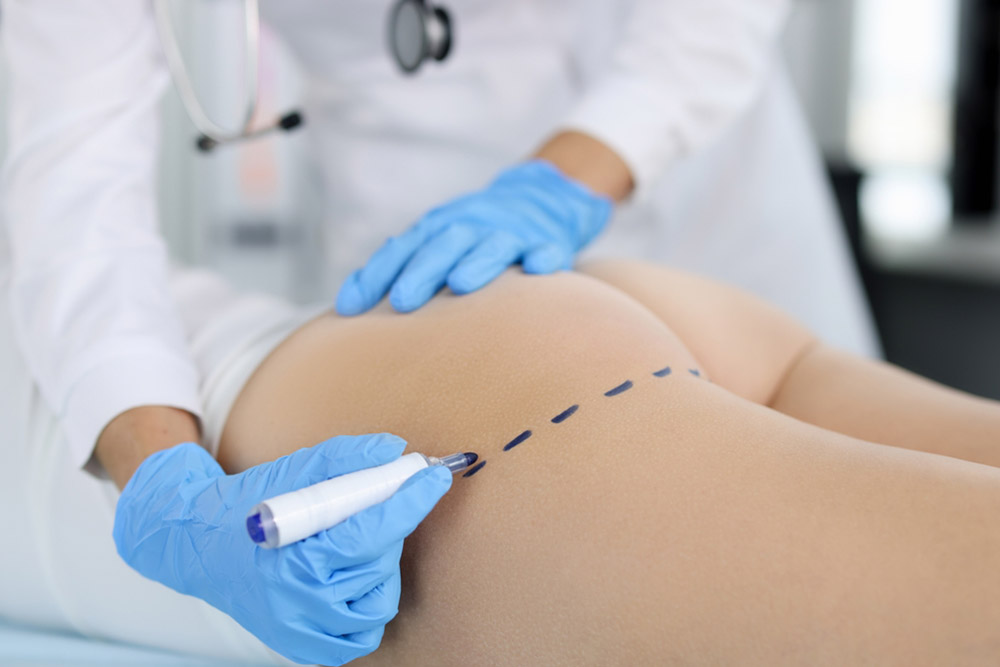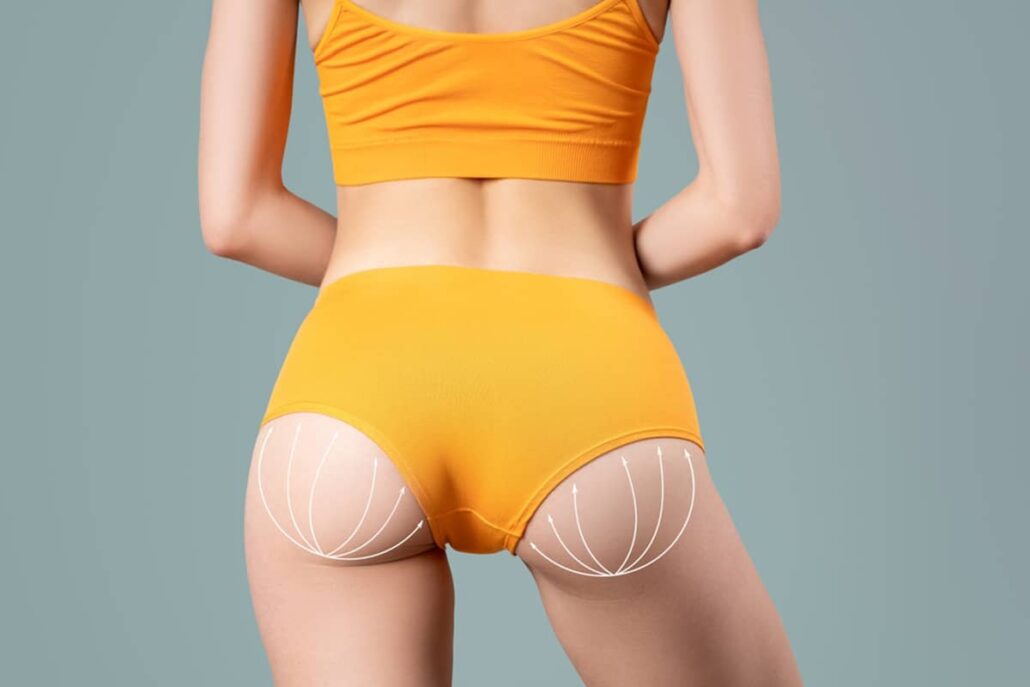
The desire for a fuller, more attractive backside has led many individuals to consider various butt augmentation procedures. One such procedure that has gained popularity is the fat transfer to buttocks surgery, also known as the Brazilian Butt Lift. This procedure utilizes the patient’s body fat to augment the size and shape of the buttocks, offering a natural alternative to artificial implants.
Why Choosing Fat Transfer to the Buttocks
- Fat transfer offers a natural and safe alternative to butt implants, using your body fat.
- The procedure not only enhances the buttocks but also slims other areas through liposuction.
- Ideal candidates are healthy individuals with enough body fat and good skin elasticity.
- Recovery involves wearing compression garments and avoiding sitting for 1-2 weeks.
- Results are long-lasting, with about 60-80% of the transferred fat remaining permanently.
Is Fat Transfer to the Buttocks a Beneficial Procedure?
The procedure is a highly effective method of buttock contouring that offers several benefits over augmentation with implants. Firstly, it uses the patient’s body fat, eliminating the risk of adverse reactions to foreign materials. It also provides a more natural-looking result, enhancing the curves of the lower body and giving a more youthful, aesthetically pleasing shape to flat buttocks.
Moreover, the process is not simply about improving buttocks. This treatment also includes liposuction, to remove extra fat from other parts of the body. These two effects work in tandem to give you an overall more balanced appearance due to the reduction of fat pockets from areas where it may be difficult for patients to lose weight and a fuller, more pronounced buttock.
Getting Ready for Buttocks Fat Transfer: The Essential Steps
Before surgery, a consultation with an experienced, board-certified plastic surgeon is required to learn more about the procedure and what you can expect. During your in-person visit, the surgeon can check if you have enough fat to harvest and the elasticity of overlying skin on the hips and butt.
Patients must also maintain a healthy lifestyle through balanced diets and regular exercise before surgery. Smoking, alcohol, and drugs should be avoided, as well as other medications or supplements that could interfere with the healing process.
Even then, patients must have realistic expectations for the results of this procedure. Fat grafting can also enhance the shape and size of your buttocks significantly. However, it cannot change body type or act as a substitute for workouts. Understanding the procedure’s limitations is vital for patient satisfaction.
Dr. Salloum is supported by a brilliant team of caring staff members. You can trust the entire staff to help make your visit as comfortable and safe as possible!
Who is an Ideal Candidate for this Procedure?
Ideal candidates for this cosmetic procedure are healthy individuals with realistic expectations and adequate body fat in areas like the hips, abdomen, lower back, or thighs for harvesting. Good skin tone in the buttocks and hips is crucial for successful butt augmentation.
Ideal candidates are also those capable of committing to a healthy lifestyle, including diet and regular exercise, for the procedure’s long-term success.
Fat Transfer to the Buttocks: What to Expect
The fat transfer to the buttocks procedure can be done as an outpatient, under general anesthesia or local anesthesia with sedation. It starts with liposuction for harvesting fat from the donor sites. Healthy fat cells are then separated from other tissues to purify the harvested fate
The fat then is injected into targeted areas of the buttocks to increase volume and improve contour. It is deposited no deeper than the subcutaneous plane, with larger cannulas to prevent injection intra-arterial.
Performing this procedure takes about two to three hours depending on the volume of fat transfer.


SPECIALIST CARE YOU CAN TRUST
Dr. Salloum is supported by a brilliant team of caring staff members.
You can trust the entire staff to help make your visit as comfortable and safe as possible!
Recovery and Aftercare from Fat Transfer
The recovery period involves wearing a compression garment for four weeks and avoiding direct sitting for a week to 10 days. This is to ensure the survival of the transferred fat cells and to minimize swelling. Patients can expect some discomfort, swelling, and bruising in the treated areas, which can be managed with prescribed pain medication.
Normal activities can usually be resumed within one week, and most patients can return to work within one to two days. However, strenuous activities and exercises should be avoided for at least four weeks or until the surgeon gives the go-ahead.
Patients are provided with aftercare instructions, including how to care for surgical sites, taking prescribed medications, and attending follow-up visits for progress checks. Following these instructions is crucial for a smooth recovery period and long-term results.

Benefits of Enhancing Buttocks with Fat Transfer
As a form of buttock augmentation, it offers numerous advantages. It utilizes the patient’s body fat, mitigating allergic reaction risks and infection chances compared to procedures using foreign materials or implants.
Because the procedure uses liposuction to remove fatty tissue from other parts of the body, patients can also benefit from a more balanced and pleasing appearance. Liposuction can reduce fat pockets on the hips, thighs, or belly, and the subsequent fat grafting can give a more youthful, aesthetically pleasing shape to flat buttocks.
In addition, the minimal scarring due to fat injection via tiny cannulas through small incisions is a significant advantage of this procedure, making it desirable for those worried about post-surgical marks.
How Long Do the Results Last?
The outcomes are long-term, but not permanent. Keep in mind that your body can resorb a percentage of the fat transferred over time. About 60-80% of the transferred fat can be expected to remain long-term on average in most patients.
The results can be altered by substantial changes in weight—gaining/losing so much could lead to the fat cells of your buttocks growing or diminishing. Other factors that would help you maintain a stable weight are living healthy by eating a balanced diet and exercising frequently which also aids in making the recovery process of liposuction last longer.
Is Fat Transfer a Safe Procedure?
In general, when performed by an experienced, board-certified plastic surgeon this procedure is safe. But as a form of cosmetic surgery, liposuction has risks too: infection; bleeding; bruising (hematomas); pain, tenderness, or numbness in the area where fat is removed, and sustained scarring at tube entry sites.
It is a risk for patients to develop fat embolism, a rare but life-threatening complication characterized by fat clogging the blood vessels. To minimize this complication, it may be safest to inject fat no deeper than the subcutaneous plane using large cannulas which reduce damage to small blood vessels.
While the procedure and aftercare instructions may have risks, adhering to those guidelines should minimize any possible complications which means most patients walk out happy with their results.
Fat grafting to the buttocks, also called Brazilian butt lift, reshapes the buttocks using liposuctioned fat from the patient’s body for a fuller, youthful appearance. It provides natural-looking enhancement while improving overall contours by reducing fat in other areas like the abdomen and thighs.
If you’re interested in enhancing your body contours, particularly your buttocks, and achieving a curvier shape, the Miami Center for Plastic Surgery offers advanced body enhancement surgeries such as the Brazilian Butt Lift.
Our experienced, double board-certified plastic surgeon, Dr. Gabriel Salloum, is an expert in Brazilian butt lift procedures, including butt implant surgery and fat grafting butt augmentation. He has helped numerous patients achieve their dream buttocks, enhancing their body contours and boosting their confidence.
To learn more about fat transfer to the buttocks or to schedule a consultation, contact the Miami Center for Plastic Surgery at (305) 405 – 6910.